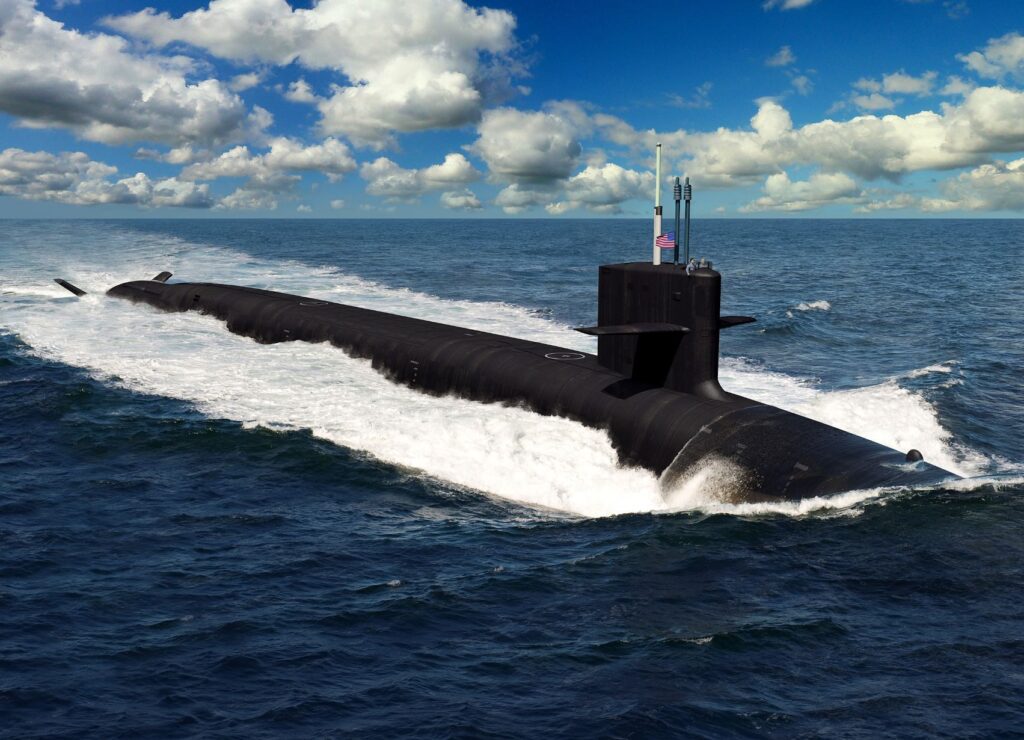
ARLINGTON, Va. — The admiral in charge of building the Navy’s next-generation ballistic-missile submarine (SSBN) said the fragility of the submarine industrial base supply chain is the main risk to the Columbia SSBN going on patrol on time in October 2030.
“The supply chain is the No. 1 risk to Columbia and 1 + 2,” said Rear Adm. Scott Pappano, program executive officer for Strategic Submarines, speaking Nov. 18 at the Naval Submarine League’s annual symposium in Arlington.
The “1+2” refers to the current submarine building load of one Columbia-class SSBN and two Virginia-class attack submarines (SSNs) per year.
Pappano also said because the Columbia-class SSBN is the Navy’s No.1 procurement priority, any schedule adjustment to the submarine programs would be borne by the Virginia-class SSNs before it would affect Columbia.
The admiral noted that in the post-Cold War period the submarine industrial base had 17,000 suppliers, a number that has declined to 5,000 today. He said the fragility is greatest with components such as castings, fittings, valves and electrical equipment.
Pappano said the Navy needs some sort of tripwire to warn the service when a supplier is faltering.
PEO Submarines soon is standing up a new directorate, PMS-396, to manage sustainment of in-service SSBNs.
He said there is no margin in the build schedule, so the Navy is not going to sponsor competitions for many components and systems already proven but will leave some room for competition.
The admiral also said that the Ohio-class SSBNs — designed for 30-year careers and extended to 42 years — may be extended even longer on an individual basis.
“Individual extensions are being looked at for targeted work,” he said.
The admiral also said that the patrol and refit cycles of the Ohio class may be adjusted “to better maximize” their service until the boats are retired in the late 2030s.
Pappano also stressed that the shore infrastructure that supports the SSBN force — such as the Trident Refit Facilities — needs attention if it is to last through the 2080s to service the Columbia SSBN force for its entire life.
- SECNAV Advocates Increased Legal Immigration to Increase Shipbuilder Workforce - April 23, 2024
- Insitu Going Strong at 30, Focusing on Maritime Operations - April 8, 2024
- Navy Awards Boeing Additional Funds for MQ-25 Drones for Testing - April 3, 2024






